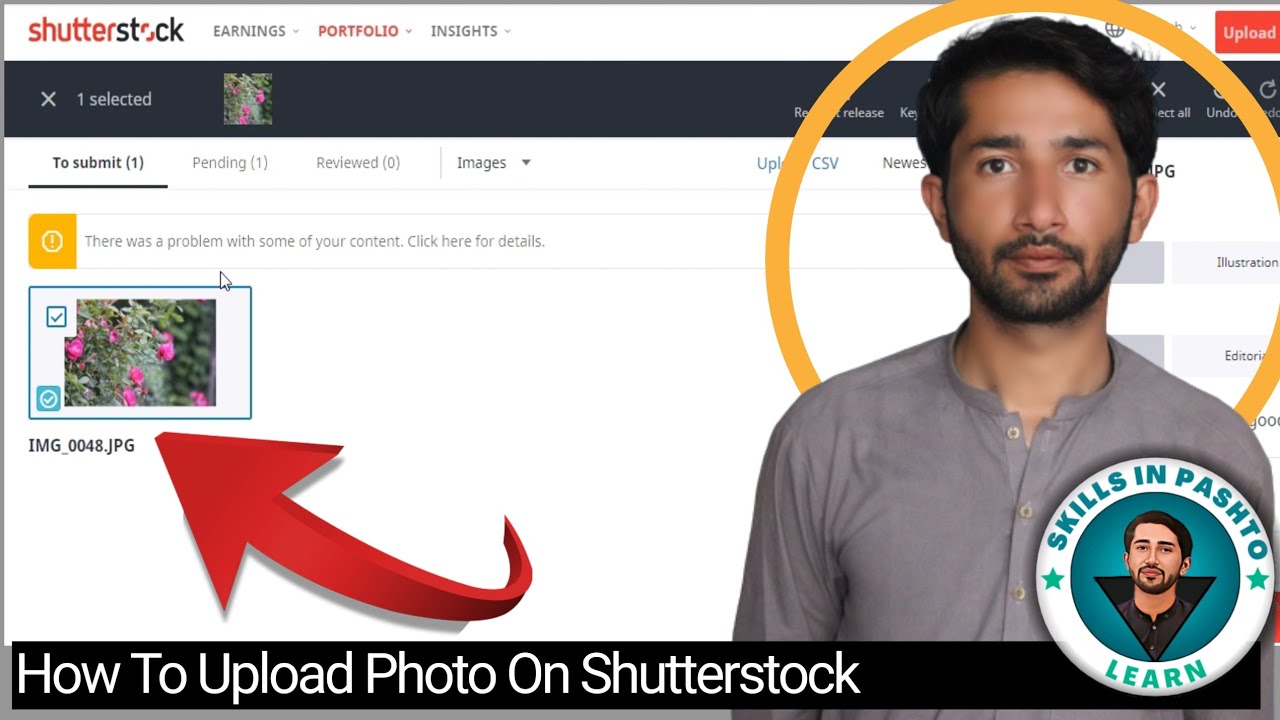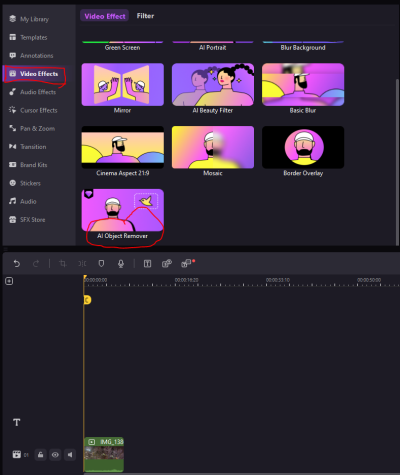Are you passionate about photography and wondering how to turn that passion into a source of income? Selling stock photos on platforms like Shutterstock can be a fantastic way to do just that. Shutterstock is one of the world’s leading stock photo websites, connecting photographers with millions of buyers looking for high-quality images. Whether you’re a hobbyist or a professional, understanding how to navigate the platform and optimize your submissions can open up new opportunities. In this guide, we’ll walk you through the basics of getting started and sharing your best shots with a global audience.
Steps to Get Started with Shutterstock as a Photographer

Getting started with Shutterstock might seem overwhelming at first, but once you understand the process, it becomes pretty straightforward. Here’s a simple step-by-step guide to help you begin your journey as a stock photographer:
1. Create a Contributor Account
The first step is to sign up as a contributor on Shutterstock. Visit their contributor portal and fill out the registration form. You’ll need to provide basic info like your name, email, and a password. Once you register, you’ll have access to your dashboard where you’ll upload your images and track your sales.
2. Understand the Submission Guidelines
Before uploading, spend some time reviewing Shutterstock’s content guidelines. They specify what kind of images are acceptable, including technical requirements like resolution, focus, and legal considerations such as avoiding copyrighted or identifiable people without model releases. Familiarizing yourself with these rules ensures your submissions won’t be rejected and saves you time.
3. Prepare Your Photos for Upload
High-quality images are key. Make sure your photos are:
- Sharp and in focus
- Well-exposed
- Free of noise and artifacts
- Properly edited and color corrected
Also, ensure your images meet the minimum resolution requirement, typically at least 4 megapixels, though higher resolution is often better for sales potential.
4. Tag and Describe Your Images Accurately
When uploading, you’ll add titles, descriptions, and tags to your images. Use relevant keywords that accurately describe the content. Think about what buyers might search for—be specific but not spammy. Good tagging increases visibility and sales chances.
5. Submit and Wait for Approval
Once everything looks good, submit your images for review. Shutterstock’s review team will evaluate your photos for quality and compliance. This process can take anywhere from a few hours to a few days. If your images are approved, they’ll go live on the site, and you’ll start earning royalties whenever they’re downloaded.
6. Keep Uploading and Learning
The more high-quality images you upload, the better your chances of making sales. Pay attention to trending topics and popular categories. Also, review your sales data regularly to understand what works best and refine your portfolio accordingly.
Starting on Shutterstock is all about patience and consistency. With time and effort, you can build a portfolio that generates passive income from your photography passion. Happy shooting!
Understanding Shutterstock’s Submission and Review Process

So, you’ve got your photos ready and you’re eager to start selling on Shutterstock. Before you hit that submit button, it’s important to understand how the submission and review process works. This not only helps set realistic expectations but also guides you on how to increase your chances of getting approved.
First, when you upload your images, Shutterstock reviewers will carefully evaluate them based on several criteria. These include technical quality, originality, relevance, and adherence to Shutterstock’s content guidelines. The review process typically takes anywhere from a few days up to a week, but it can sometimes be a bit longer depending on the volume of submissions.
During the review, your images are checked for:
- Technical Quality: Is the photo sharp, well-exposed, and free of noise or artifacts?
- Content Compliance: Does the image follow Shutterstock’s content policies? No prohibited content like offensive material or copyrighted brand logos without permission.
- Model and Property Releases: If your photo features recognizable people or private property, you need the appropriate releases.
- Uniqueness and Marketability: Does your photo offer something fresh or useful for buyers?
Once your images pass the review, they’ll be approved and available for sale. If they’re rejected, Shutterstock typically provides a reason, such as technical issues or content restrictions. Don’t get discouraged! Use the feedback to improve your future submissions.
To streamline this process, make sure your images are properly keyworded and categorized, as this helps reviewers understand your content better and increases the likelihood of acceptance.
Tips for Taking High-Quality Stock Photos That Sell

Now that you know how the review process works, let’s talk about how to actually create photos that stand out and sell. The key is to produce images that are both high-quality and in demand. Here are some practical tips to help you get started:
1. Focus on Technical Excellence
Ensure your photos are sharp, well-lit, and properly exposed. Use a good camera and pay attention to details like focus and color accuracy. Avoid noise, blurriness, or over-processed images. Remember, buyers want professional-looking visuals.
2. Follow Trends and Demand
Stay updated on what types of images are trending. For example, current popular themes include remote work, sustainability, diverse representation, and technology. Browse Shutterstock’s trending collections and top-selling images for inspiration.
3. Capture Versatile and Timeless Content
Stock photos that are versatile tend to sell better. Think about images that can be used across various industries and projects. Also, aim for timeless themes that won’t look outdated quickly, like nature, business, or everyday life.
4. Prioritize Authenticity and Diversity
Buyers are looking for authentic, relatable images. Include diverse models, settings, and scenarios to appeal to a broad audience. Genuine expressions and candid moments resonate more than overly staged shots.
5. Use Proper Lighting and Composition
Good lighting makes a huge difference. Natural light often works best, but if shooting indoors, invest in softboxes or diffusers. Pay attention to composition rules like the rule of thirds, leading lines, and framing to create visually appealing images.
6. Don’t Overuse Effects or Filters
Keep your edits subtle. Overdone filters can make images look artificial and less professional. Focus on natural colors and clarity to enhance your photos without going overboard.
7. Experiment and Practice
The more you shoot, the better you’ll get. Try different angles, lighting setups, and subjects. Review your work critically and learn from what works and what doesn’t. Over time, you’ll develop a style that appeals to buyers.
Remember, patience and persistence are key. Not every shot will be a hit, but with consistent effort and attention to quality, you’ll increase your chances of creating stock photos that sell well on Shutterstock. Happy shooting!
How to Optimize Your Photos for Better Visibility and Sales

So, you’ve uploaded some stunning images to Shutterstock—great start! But if you really want your photos to get noticed and boost your sales, you’ll need to optimize them effectively. Think of it as giving your photos a little boost so they can stand out in a crowded marketplace.
First off, keywording is king. When potential buyers search for images, they type in keywords, so your goal is to make your photos easy to find. Use relevant, specific, and descriptive keywords that match what people might search for. For example, instead of just “dog,” try “Golden Retriever puppy playing in the park.”
Here are some quick tips for keyword optimization:
- Be Specific: Use detailed keywords to describe the scene, subject, and mood.
- Use Synonyms: Think about different words people might use to search for the same thing.
- Avoid Overstuffing: Don’t cram in irrelevant keywords—they can hurt your ranking.
- Update Regularly: Keep your keywords fresh and relevant, especially if you update or add new photos.
Next, pay attention to the quality of your images. Shutterstock favors high-resolution, well-lit, and sharp photos. Make sure your images are properly exposed, color-corrected, and free of noise or distractions. Investing in good editing software can make a noticeable difference in how professional your photos look.
Another tip is to choose the right categories and titles. Use clear, accurate titles that reflect the content of the image, and select appropriate categories so buyers can easily find your work when browsing.
Lastly, consistency is key. Regularly uploading fresh content keeps your portfolio active and increases the chances of your images being featured or recommended. The more quality images you have, the better your chances of sales.
Remember, optimizing isn’t a one-time thing. Keep track of which images perform well, tweak your keywords if needed, and stay updated on Shutterstock’s best practices. A little effort in optimization can go a long way in turning your photos into a steady income stream!
Managing Your Shutterstock Portfolio and Earnings
Congratulations! You’ve uploaded your photos and started making sales. Now, let’s talk about managing your portfolio and earnings to keep things running smoothly—and to maximize your income.
First, keep an eye on your portfolio. Regularly review your uploaded images and consider removing or updating those that aren’t performing well. Shutterstock provides stats on views, downloads, and earnings, so you can see what’s popular and what’s not. Focus on creating more of what sells and refine or retire images that don’t get much traction.
Organizing your files is also essential. Use clear, consistent naming conventions, and categorize your images thoughtfully. This helps you find and update images quickly, and it makes it easier to analyze your portfolio over time.
Next, stay on top of your earnings. Shutterstock pays contributors based on the number of downloads and the type of license purchased. Log into your dashboard regularly to monitor your commissions and identify trends. For example, if certain themes or styles generate more sales, consider focusing more on those areas.
It’s also a good idea to set financial goals. Decide how much you want to earn each month and strategize accordingly—whether that’s uploading more images, experimenting with different niches, or improving your keywording skills.
Another handy tip is to diversify your portfolio. Don’t rely solely on a few popular images—spread out your efforts across various themes and styles. This reduces risk and increases the chance of steady income from multiple sources.
Finally, keep yourself informed about Shutterstock’s policies, updates, and best practices. Participate in forums or communities for contributors—they can offer valuable insights and tips to help you grow.
Managing your Shutterstock portfolio isn’t just about uploading images; it’s an ongoing process of review, refinement, and strategic planning. With consistent effort, you’ll build a strong collection that generates reliable earnings over time.
Common Mistakes to Avoid When Selling Stock Photos on Shutterstock
Jumping into stock photography can be exciting, but there are some common pitfalls that many beginners fall into. Knowing what to watch out for can save you time, frustration, and even money. Here are some of the most typical mistakes—and how to steer clear of them.
1. Ignoring Submission Guidelines
Shutterstock has specific requirements for image quality, metadata, and model releases. Forgetting to follow these guidelines can lead to rejection or your photos being removed later. Always read the submission checklist carefully before uploading. For example, images should be at least 4 megapixels, in focus, with proper lighting, and free of noise or compression artifacts.
2. Overloading Your Portfolio with Similar Shots
While it’s good to have a variety of images, uploading dozens of nearly identical photos can dilute your portfolio’s quality and reduce your chances of sales. Instead, focus on diversity—different subjects, angles, and concepts—to appeal to a broader audience.
3. Neglecting Keywording and Metadata
Proper keywords and descriptions are vital for discoverability. Don’t just add generic tags like “nature” or “sky.” Be specific and think about what buyers might search for. Use relevant keywords, include location info if applicable, and write clear, concise descriptions.
4. Focusing Only on Popular Subjects
While trending topics can boost your sales temporarily, sticking only to popular subjects can make your portfolio monotonous. Try to balance trending images with evergreen content—think of timeless themes like business, health, or everyday life.
5. Ignoring Model and Property Releases
If your photos include recognizable people or private property, having the correct releases is essential. Without them, Shutterstock may reject your submission or remove it later. Always obtain and upload the necessary legal documentation.
6. Poor Post-Processing Skills
Over-editing or under-editing can harm your images’ appeal. Strive for natural-looking photos with balanced contrast, color, and sharpness. Use editing tools judiciously—enhance, but don’t overdo it.
7. Not Monitoring Your Performance and Trends
Failing to track which images sell well or updating your portfolio based on current trends can limit your earnings. Regularly review your sales data, and consider creating more content that aligns with what buyers are currently seeking.
Conclusion and Next Steps for Successful Stock Photography Selling
Embarking on your stock photography journey with Shutterstock is an exciting adventure filled with opportunities. While it might seem overwhelming at first, understanding the common mistakes to avoid and following best practices will set you on the right path. Remember: quality always trumps quantity, and attention to detail can make all the difference.
Now that you know what pitfalls to watch out for, here are some next steps to boost your success:
- Refine Your Portfolio: Curate your best images, ensuring they meet quality standards and are properly tagged.
- Stay Updated on Trends: Follow industry blogs, Shutterstock’s blog, and social media to spot emerging themes and popular subjects.
- Continue Learning: Invest time in improving your photography skills, editing techniques, and understanding keyword strategies.
- Engage with the Community: Join online forums or groups where stock photographers share tips, feedback, and support.
- Be Patient and Persistent: Sales may not skyrocket overnight, but consistent effort and continuous improvement will pay off over time.
Happy shooting, and best of luck turning your creative shots into a steady income stream on Shutterstock!


